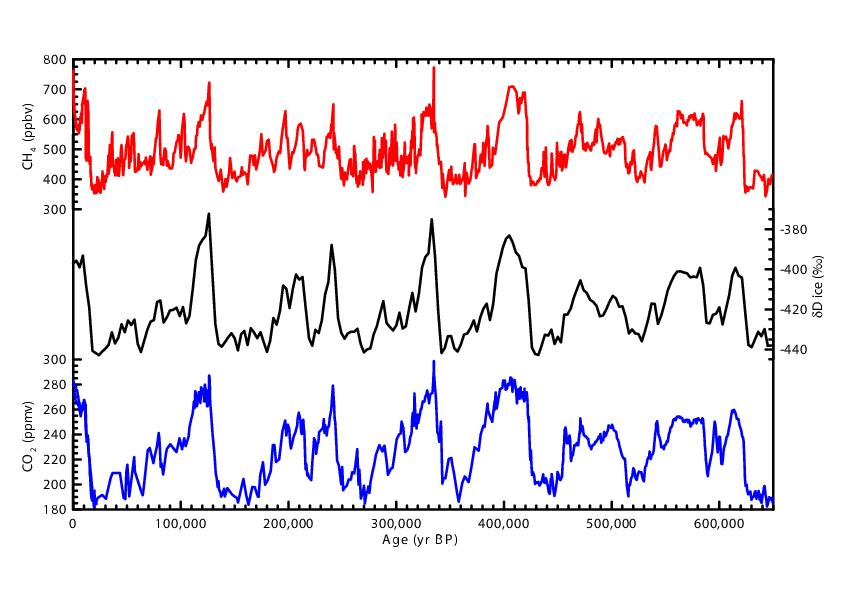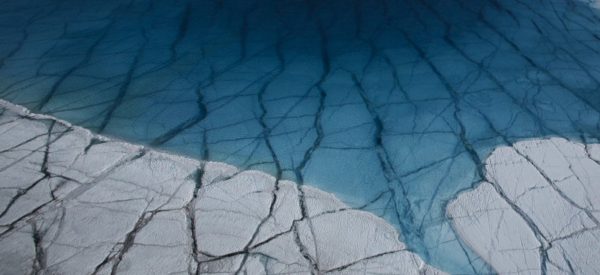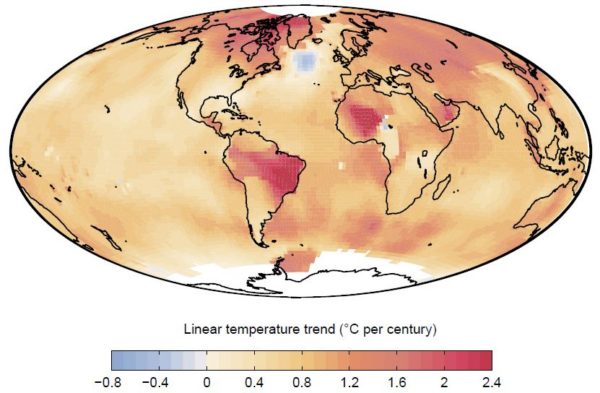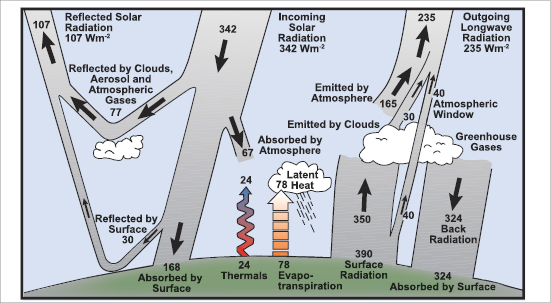This month’s open thread. Usual rules apply…
Climate Science
Don’t make a choice that your children will regret
Dear US voters,
the world is holding its breath. The stakes are high in the upcoming US elections. At stake is a million times more than which email server one candidate used, or how another treated women. The future of humanity will be profoundly affected by your choice, for many generations to come.
The coming four years is the last term during which a US government still has the chance, jointly with the rest of the world, to do what is needed to stop global warming well below 2°C and closer to 1.5°C, as was unanimously decided by 195 nations in the Paris Agreement last December. The total amount of carbon dioxide the world can still emit in order to have at least a 50% chance to stop warming at 1.5 °C will, at the current rate of emissions, be all used up in under ten years! This time can only be stretched out by making emissions fall rapidly.
Even 2°C of global warming is very likely to spell the end of most coral reefs on Earth. 2°C would mean a largely ice-free Arctic ocean in summer, right up to the North Pole. Even 2°C of warming is likely to destabilize continental ice sheets and commit the world to many meters of sea-level rise, lasting for millennia. Further global warming will likely lead to increasing extreme weather, droughts, harvest failures, and the risk of armed conflict and mass migration.
Meltwater on the Greenland Ice Sheet. Photo with kind permission by Ragnar Axelsson.
In case you have any doubts about the science: in the scientific community there is a long-standing consensus that humans are causing dangerous global warming, reflected in the clear statements of many scientific academies and societies from around the world. None of the 195 governments that signed the Paris Agreement saw any reasons for doubting the underlying scientific facts; doubts about the science that you see in some media are largely manufactured by interest groups trying to fool you.
You have a fateful choice to make. The policies of candidates and parties on climate change could hardly be more different. Hillary Clinton would continue to work with the international community to tackle the global warming crisis and help the transition to modern clean and renewable energies. Donald Trump denies that the problem even exists and has promised to go back to coal and to undo the Paris Agreement, which comes into force today, the 4th of November 2016, as culmination of over twenty years of negotiations.
Please consider this carefully. This is not an election about personalities, it is about policies that will determine our future for a long time to come. While the presidential race has gotten the most attention, voters should consider climate not just at the ‘top of the ticket’, but all the way down the ballot. Don’t make a choice that you, your children and your children’s children will regret forever.
David Archer, Rasmus Benestad, Ray Bradley, Michael Mann, Ray Pierrehumbert, Stefan Rahmstorf and Eric Steig
Carbon storage in WA state forests is too small and too risky to play a serious role as a climate change mitigation tool
Guest post by John Crusius, Richard Gammon, and Steve Emerson
The scientific community is almost universally in agreement that climate change (and ocean acidification) are severe threats that demand a rapid response, with putting a price on fossil fuel CO2 emissions being a top priority. Far and away the single biggest contributor to climate change is CO2 emissions from fossil fuel combustion. Indeed, global CO2 emissions from fossil fuel emissions in recent years have been roughly ten times higher than emissions from the next largest global source, land use change, including deforestation (Le Quéré et al., 2015). Despite the small size of carbon fluxes from forests, enhancing carbon storage in forests is often discussed in WA state as a tool to fight climate change. There was one such claim in the Seattle Times OpEd from October 21 by Mathew Randazzo. We challenge these claims that forest carbon sequestration in WA state can significantly help solve climate change. Randazzo does not spell out in any detail what he means. As always, details matter in such discussions, as the science is complex. We focus here on some of the best available science on the climate and carbon storage impacts of forests, and provide references at the bottom of this article from some of the premier scientific journals in the world.
Tuning in to climate models
There is an interesting news article ($) in Science this week by Paul Voosen on the increasing amount of transparency on climate model tuning. (Full disclosure, I spoke to him a couple of times for this article and I’m working on tuning description paper for the US climate modeling centers). The main points of the article are worth highlighting here, even if a few of the characterizations are slightly off.
Q & A about the Gulf Stream System slowdown and the Atlantic ‘cold blob’
Last weekend, in Reykjavik the Arctic Circle Assembly was held, the large annual conference on all aspects of the Arctic. A topic of this year was: What’s going on in the North Atlantic? This referred to the conspicuous ‘cold blob’ in the subpolar Atlantic, on which there were lectures and a panel discussion (Reykjavik University had invited me to give one of the talks). Here I want to provide a brief overview of the issues discussed.
What is the ‘cold blob’?
This refers to exceptionally cold water in the subpolar Atlantic south of Greenland. In our paper last year we have shown it like this (see also our RealClimate post about it):
Fig. 1 Linear temperature trends from 1901 to 2013 according to NASA data. Source: Rahmstorf et al, Nature Climate Change 2015.
[Read more…] about Q & A about the Gulf Stream System slowdown and the Atlantic ‘cold blob’
Unforced Variations: Oct 2016
The Snyder Sensitivity Situation
Nature published a great new reconstruction of global temperatures over the past 2 million years today. Snyder (2016) uses 61 temperature reconstructions from 59 globally diverse sediment cores and a correlation structure from model simulations of the last glacial maximum to estimate (with uncertainties) the history of global temperature back through the last few dozen ice ages cycles. There are multiple real things to discuss about this – the methodology, the relatively small number of cores being used (compared to what could have been analyzed), the age modeling etc. – and many interesting applications – constraints on polar amplification, the mid-Pleistocene transition, the duration and nature of previous interglacials – but unfortunately, the bulk of the attention will be paid to a specific (erroneous) claim about Earth System Sensitivity (ESS) that made it into the abstract and was the lead conclusion in the press release.
The paper claims that ESS is ~9ºC and that this implies that the long term committed warming from today’s CO2 levels is a further 3-7ºC. This is simply wrong.
[Read more…] about The Snyder Sensitivity Situation
References
- C.W. Snyder, "Evolution of global temperature over the past two million years", Nature, vol. 538, pp. 226-228, 2016. http://dx.doi.org/10.1038/nature19798
Why correlations of CO2 and Temperature over ice age cycles don’t define climate sensitivity
We’ve all seen how well temperature proxies and CO2 concentrations are correlated in the Antarctic ice cores – this has been known since the early 1990’s and has featured in many high-profile discussions of climate change.

EPICA Dome C ice core greenhouse gas and isotope records.
The temperature proxies are water isotope ratios that can be used to estimate Antarctic temperatures and, via a scaling, the global values. The CO2 and CH4 concentration changes can be converted to radiative forcing in W/m2 based on standard formulas. These two timeseries can be correlated and the regression (in ºC/(W/m2)) has the units of climate sensitivity – but what does it represent?
Can a blanket violate the second law of thermodynamics?
One of the silliest arguments of climate deniers goes like this: the atmosphere with its greenhouse gases cannot warm the Earth’s surface, because it is colder than the surface. But heat always flows from warm to cold and never vice versa, as stated in the second law of thermodynamics.
The freshly baked Australian Senator Malcolm Roberts has recently phrased it thus in his maiden speech:
It is basic. The sun warms the earth’s surface. The surface, by contact, warms the moving, circulating atmosphere. That means the atmosphere cools the surface. How then can the atmosphere warm it? It cannot. That is why their computer models are wrong.
This is of course not only questions the increasing human-caused greenhouse effect, but in general our understanding of temperatures on all planets, which goes back to Joseph Fourier, who in 1824 was the first to understand the importance of the greenhouse effect.
The atmosphere acts like a blanket which inhibits heat loss. In fact according to Roberts’ logic, a blanket could also not have a warming effect:
It’s simple. The body warms the blanket. This means that the blanket cools the body. So how can the blanket warm it? It cannot!
The answer is simple. The warm body loses heat to the cold air. The blanket inhibits and slows this heat loss. Therefore you stay warmer under a blanket.
The Earth loses heat to the cold universe. The atmosphere inhibits this heat loss. Therefore, the surface remains warmer than it would be without the atmosphere.
It is true that the surface loses heat to the atmosphere – but less than it would otherwise lose directly to space. Just as I lose less heat to the blanket than I would otherwise lose to the air, without blanket.
Of course, in neither case is the second law of thermodynamics violated. The heat always flows from warm to cold – just more or less effectively. The processes of heat transfer are quite different – for the blanket it is mainly heat conduction, for the greenhouse effect it is thermal radiation. The climate deniers claim that the colder atmosphere cannot radiate thermal radiation towards the warmer surface. This is of course nonsense. The cool Earth also sends thermal radiation towards the hot sun – how would thermal radiation leaving Earth know how warm the surface is that it’s going to hit? It’s just that the sun sends more radiation back to us – the net flow is from hot to cold. More is not implied by the second law of thermodynamics.
Thanks to two Germans (Gerlich and Tscheuschner of the TU Braunscheig – deeply embarrassing for this university), the absurd claim that the greenhouse effect violates the second law of thermodynamics even made it into an obscure physics journal – obviously there was no peer review to speak of. The bizarre article was promptly demolished by some US physicists. Just recently I read the claim again in an article of coal lobbyist Lars Schernikau – with such fairy-tale beliefs of its representatives, one is not surprised by the decline of the coal industry.
The thermal radiation from the atmosphere toward the ground, which allegedly cannot exist, is of course routinely measured, including its increase (see e.g. Philipona et al. 2004, 2012).
And you can even feel it. Those who sometimes sit outside in the garden after dark know this. Under a dense, low cloud layer you do not nearly get cold as fast as on a clear starry night. This is due to the thermal radiation coming from the clouds. They are colder than our body, but warmer than the night sky in clear air.
Roberts said: “Like Socrates, I love asking questions to get to the truth.” Perhaps he will ponder my answer next time he sits in his garden at night, or slips under a blanket.
P.S.
Here is the energy balance diagram for our Earth, explained in IPCC FAQ 1.1. The “Back Radiation” makes the greenhouse effect. It is larger than the solar radiation reaching the ground, and measured by a global radiation measurement network.
References
R. Philipona, “Radiative forcing – measured at Earth’s surface – corroborate the increasing greenhouse effect”, Geophys. Res. Lett., vol. 31, 2004. http://dx.doi.org/10.1029/2003GL018765
R. Philipona, A. Kräuchi, and E. Brocard, “Solar and thermal radiation profiles and radiative forcing measured through the atmosphere”, Geophys. Res. Lett., vol. 39, pp. n/a-n/a, 2012. http://dx.doi.org/10.1029/2012GL052087
What is new in European climate research?

What did I learn from the 2016 annual European Meteorological Society (EMS) conference that last week was hosted in Trieste (Italy)?
[Read more…] about What is new in European climate research?


